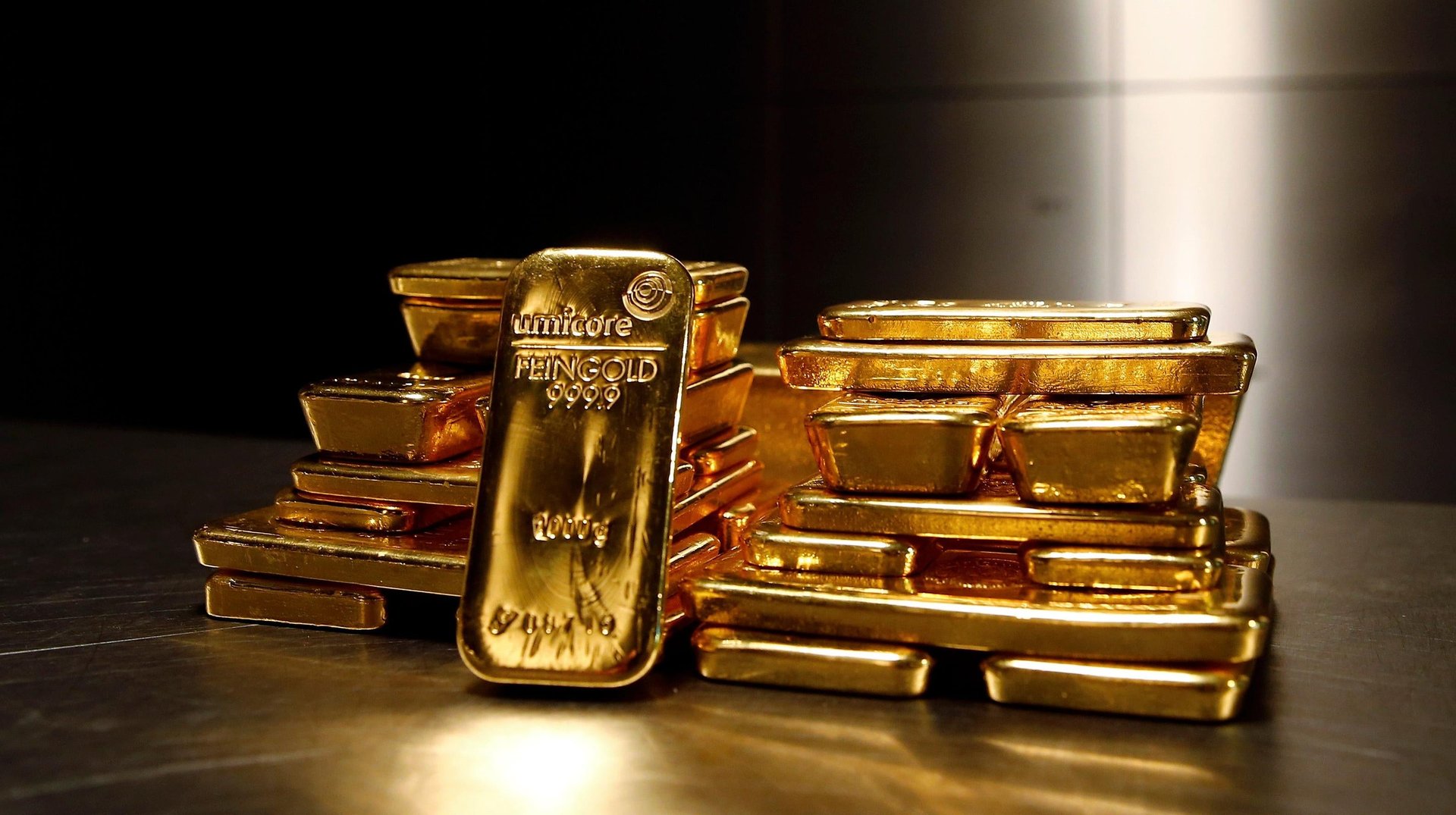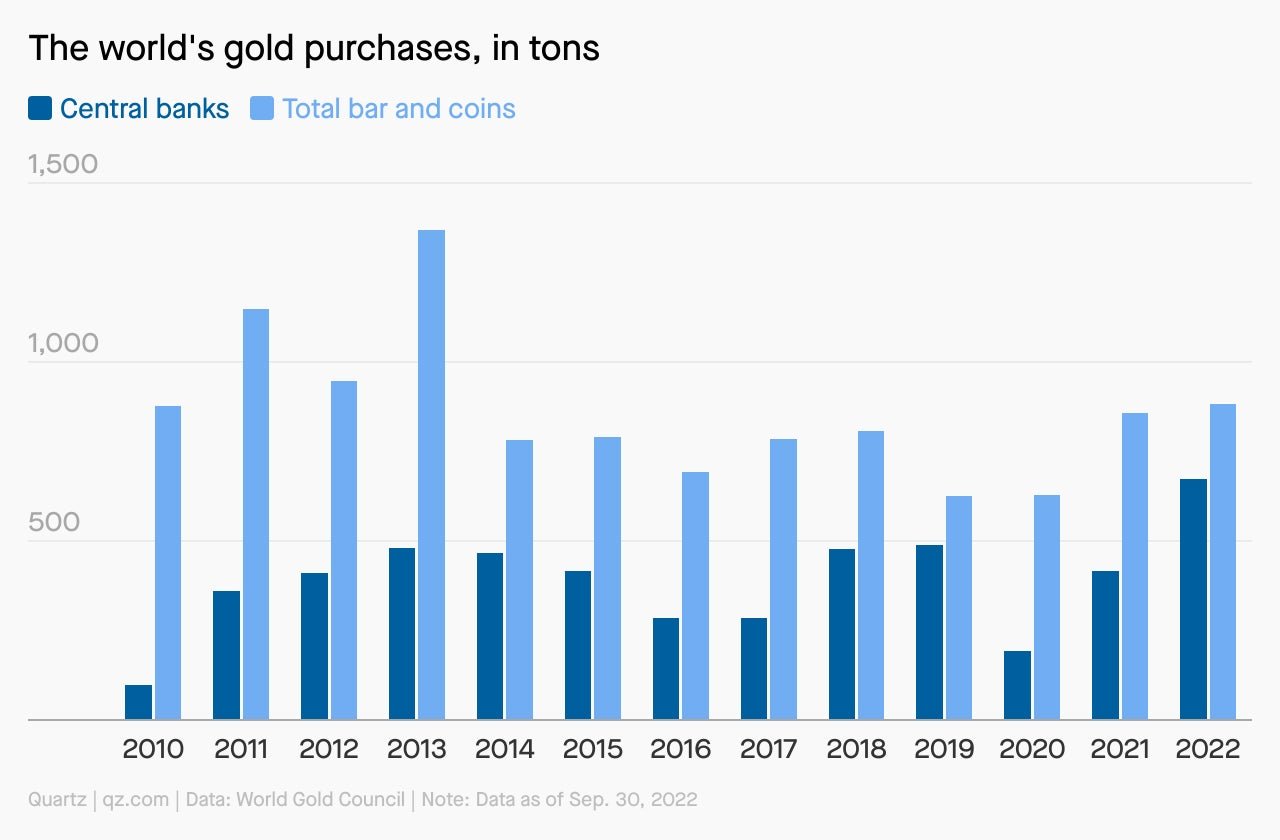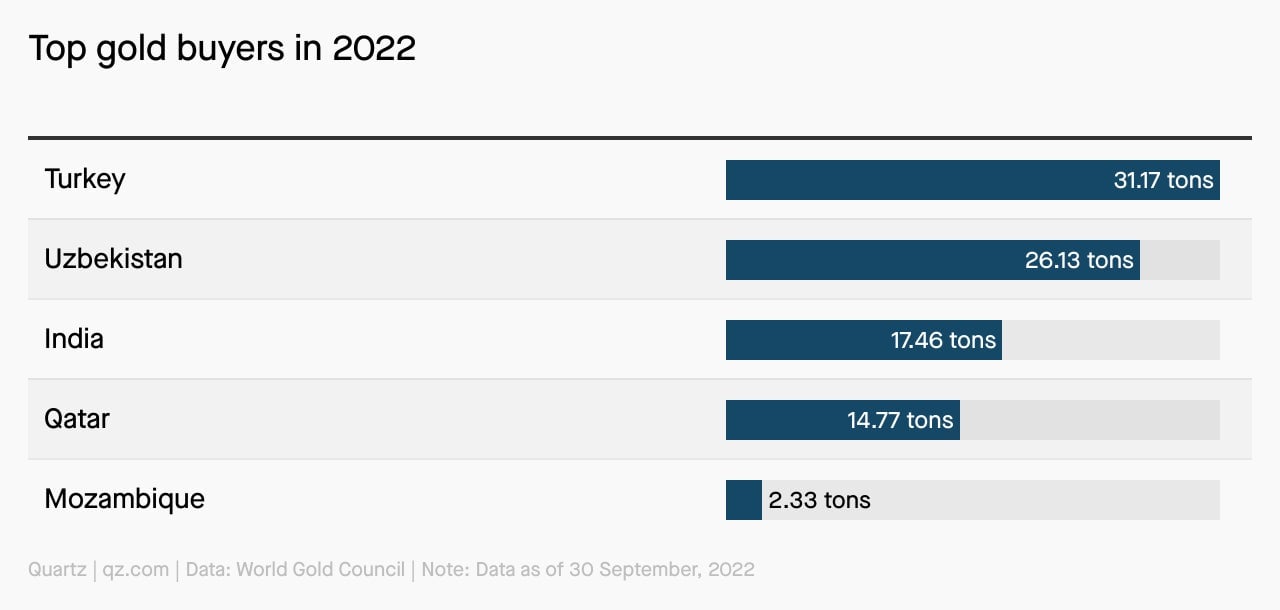Central banks haven't bought this much gold since 1967
Turkey's central bank has bought the most gold this year, followed by Uzbekistan and India.

Central banks globally have accumulated gold reserves this year at a pace never seen since 1967, when the US dollar was still backed by the precious metal.
In the quarter ending September, demand for gold was up 28% year-on-year, reaching 1,181 tons, according to a new World Gold Council (WGC) report. The demand for gold this year has been primarily driven by a flight towards safer assets amid scorching inflation.
Gold is regarded as an effective inflation hedge, although some analysts believe this to be true only over extremely long time horizons stretching over a century or more.
A significant chunk of the demand from central banks arose during the previous quarter, setting a record of nearly 400 tons that lifted central bank net purchases to date to 673 tons.

This was a “combination of steady reported purchases by central banks and a substantial estimate for unreported buying,” the WGC said in its report.
Central banks are stocking up on gold
Turkey was the biggest buyer of gold during the quarter, followed by Uzbekistan (26.13 tons) and India (17.46 tons). Not all countries report their gold purchases regularly, so it’s difficult to know how much, for example, China and Russia bought during this same period.

India is also shoring up its gold reserves.
Indian consumers habitually purchase gold jewelry ahead of the festive season every October. But that aside, the Reserve Bank of India (RBI) bought 13 tons of gold in July and 4 tons in September, pushing its reserves to 785 tons, according to the WGC.
One reason for the RBI to embark on a gold-buying spree could be an attempt to diversify assets in which its foreign exchange reserves are parked.
In 2022, the Indian rupee fell heavily against the US dollar, by nearly 10%, due to aggressive rate hikes by the Federal Reserve. But the RBI used its forex reserves to cushion the fall somewhat.